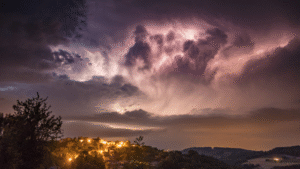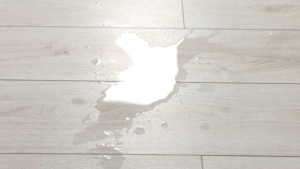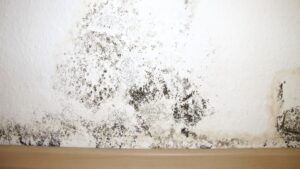Contact Our California Restoration Experts!
Our home restoration team often gets asked: What is a crawl space? A crawl space is an area that exists between the ground and the first floor.
There are many reasons why a homeowner may consider insulating their home’s crawl space. The most prominent reason is the fact that it helps to maximize their home’s energy efficiency. When crawl spaces are not properly insulated, hot and cold air are easily lost through the floor. Ultimately, this means that the homeowner’s heating and cooling systems need to work extra hard to keep the home’s interior at consistent, optimal temperatures. Not only does this result in higher energy bills, but it also takes a toll on the lifespan of the systems, often leading to frequent, costly repairs. More importantly, proper crawl space insulation can prevent mold growth and water damage, both of which can wreak havoc on your home.
In short, insulating crawl spaces is sure to save every homeowner a sizeable amount of money, both in the short and the long term. Here are the facts that you need to know, along with a step-by-step guide to follow when it comes to taking action.
What Type of Crawl Space Insulation Is Needed?
The type of crawl space insulation required will depend on the type of crawl space that is to be insulated. There are two main variations, namely ventilated and unventilated crawl spaces.
Insulating Ventilated Crawl Spaces
A number of experts believe that ventilated crawl spaces are much more efficient than unventilated crawl spaces because the additional air flow helps to reduce any residual moisture that could lead to the growth of mold. This type of crawl space may be insulated with fiberglass. The fiberglass insulation is easy to install under the subfloor between the floor joists and can be nicely secured with a vapor barrier.
Insulating Unventilated Crawl Spaces
You will not insulate the subfloor above the crawl space if the crawl space is unventilated. Instead, you will need to insulate the walls of the crawl space itself, and will not need to worry about separately insulating ducts and pipes. Maximize the protection of your crawl space by installing a vapor barrier (made out of polyurethane for best results) over the dirt floor and covering it with sand.
Installing Crawl Space Insulation: A Guide
Now that you know what kind of insulation you are looking at, you will be able to get started on the act of installing the insulation, protecting your home’s crawl space, and optimizing your home’s energy efficiency.
- Step 1
The first step is to clear out the crawl space thoroughly. This is to ensure that you have enough space in which to work comfortably and move around as necessary. Get rid of any sharp rocks or debris, not only to prevent any injuries but also to prevent any tears or damage to the insulation.
- Step 2
Consider whether or not you are likely to run into any problems regarding bulk water accumulation. Even if your crawl space has not been prone to flooding in the past, that does not mean that it is immune. It is always worthwhile to consider installing a sump pump at the lowest point for greater peace of mind.
- Step 3
The next step is to deal with any existing moisture in the crawl space; you want to identify and rectify the cause of this moisture. So, be on the lookout for any leaking fixtures. These may include old pipes, water heaters or air conditioner condensation drain pipes. Prevent moisture from posing a problem again in the future by applying a waterproof membrane to the walls. This waterproof membrane is a thick material that glides onto the walls like paint that works well to seal porous concrete and other hard surfaces.
- Step 4
Now, move your attention to the vapor barrier. This may sound complicated, but all that you really need to do is cover the crawl space floor with overlapped sheets of 6-mil plastic.
- Step 5
If you are insulating a ventilated crawl space, avoid placing the insulation over any vents. Instead, add fiberglass batting to the spaces found between the joists, otherwise known as ‘joist bays’. Do not squash the fiberglass material as this will limit its functionality and ability to provide maximum insulation.
- Step 6
Begin the installation process by running non-faced batting, which has no paper vapor barrier, from the floor up to the sill plate, following the concrete foundation wall if you are insulating an unventilated crawl space. This type of batting works to further protect the crawl space from any lingering moisture.
From there, move your attention to the newly installed vapor barrier and extend the insulation over it by about seven inches. Finish off the job by cutting sections of insulation and placing them into the joist bays where the bays meet the rim joist (the floor joists will be nailed into it).
Is It Safe to Go into My Home’s Crawl Space?
That depends. Some crawl spaces may be filled with asbestos or radon gas, both of which can be damaging to a person’s health. As such, the recommendation to all homeowners is to consider getting their crawl space air tested before spending long periods of time down there.
What Happens If My Crawl Space Has Been Damaged from a Leak and I Need Home Restoration?
Water damage and persistent moisture are extremely common in crawl spaces of all types and sizes. If this is the case in your home, you will undoubtedly be wondering how to dry out the crawl space after a leak. This is how to go about it:
- The first step is to identify the source of the leak and repair it.
- Dry out the larger puddles of water using towels and anything else absorbent that you can find. A crawl space dehumidifier can be helpful when it comes to both removing and preventing moisture within the crawl space.
- From there, you will need to replace the insulation if it has gotten wet.
- Also, be sure to remove any damp debris and get rid of any visible mold growth (this is something that is best handled by a professional).
How Do I Know If My Crawl Space Is Properly Insulated?
The best way is to leave crawl space insulation to the experts who know exactly what they are doing, have the right materials on hand, and have a variety of equipment that can help to streamline the process. You can tell that a thorough job has been done if:
- The vents have been fixed
- The rim joist has been properly insulated with spray foam
- The foundation has also been insulated
Rigid foam insulation boards will need to be glued to the inside of foundation walls using a waterproof construction adhesive. Most professionals will finish the job off by sealing all seams with waterproof tape too.
Are There Other Options When It Comes to Crawl Space Insulation?
Yes. The ones mentioned above are not the only materials that can be used to insulate a crawl space effectively; although they are the materials of choice for many professionals. Other options may include:
- Spray Foam:
This promises a faster, more convenient method of insulating a crawl space, but it definitely is not the eco-friendliest. Furthermore, it is not possible to DIY a spray foam insulation job. It will need to be tackled by a professional.
- EPS Foam Boards:
This is another option for unventilated crawl spaces. The boards can be applied directly to the concrete. This can be done using either strapping and tap con screws, or an appropriate adhesive that has been created for use on foam boards.
- XPS Foam Boards:
These can be used in place of EPS foam boards when insulating an unventilated crawl space. However, XPS foam boards are known to be less eco-friendly due to their higher greenhouse gas emissions.
- Mineral Wool Boards:
These boards are made out of recycled stone dust, thus providing enhanced protection against fire. However, these boards will not be able to act as a vapor barrier. So, you will need to apply a poly membrane against the concrete before fitting the boards.
Does It Matter What Batting I Use When Insulating a Crawl Space?
Yes. The type of batting that you use will depend on whether crawl space is ventilated or unventilated:
- Ventilated Crawl Spaces
Kraft-paper-backed batting tends to work well when used in ventilated crawl spaces as it adds an additional vapor barrier. Just remember to face it towards the space that is warmer during the heating season.
- Unventilated Crawl Spaces
It is better to use non-faced batting when insulating an unventilated crawl space. This type of batting does not have a paper vapor barrier but it should have a vinyl surface on the side. This surface will aid in preventing fiberglass particles from flying around the crawl space over time.
Is It Easier to Insulate an Unventilated Crawl Space?
In most cases, yes. Unventilated crawl spaces also require much less insulation (you will usually need approximately 400 square feet for a 1,000-square-foot crawlspace with 3-foot walls).
Insulating Floor Over a Dirt Crawl Space
If your crawl space has a dirt floor, it is critical that you install insulation. Dirt floors are major sources of moisture and need to be insulated with a polyethylene barrier to cut off the moisture supply to the air in a crawl space. Even doing as little as laying insulation down over the ground can significantly reduce the amount of moisture in the air.
Insulating the floor over a dirt crawl space is relatively simple. For the best results, place a polyethylene vapor retarder over the dirt floor in your crawl space. Make certain that it is secure by carefully sealing all of the seams. Many homeowners will then cover the vapor retarder with sand or concrete to protect it from damage – but just be careful about the type of sand you use. Crushed gravel, for instance, could poke holes in the delicate material. If you will be using concrete to cover it instead, just be sure that the headroom of the crawl space complies with local regulations before proceeding.
Are There Any Reasons Not to Insulate Your Crawl Space?
There are some cons to insulating a crawl space, but the pros definitely outweigh these small downsides. For instance, you may need to replace the insulation on a regular basis as it is likely to incur damage from rodents, water, and pests over time. The air barrier will also need some TLC in order to remain in good condition. This means that there will be a fair amount of maintenance involved. Furthermore, a crawl space access door will need to be situated within the home through the subfloor. An alternative is to place an airtight, insulated access door in the perimeter wall.
How Can West Coast Fire and Water help?
West Coast Fire and Water is well-versed in helping homeowners in the area deal with crawl spaces and crawl space insulation that has been damaged by water leaks. We offer a variety of home restoration services that can ensure your home is in tip-top shape all year round. We utilize state of the art tools and equipment in order to ensure not only a job well done, but also much faster and more efficiently than you could ever imagine! Whether you need more information about home restoration costs or home repair, we will gladly advise you.
For more information about crawl space insulation and replacing it following unexpected water damage, please do not hesitate to get in touch with our home restoration team. Call (707) 307-6927 to learn more.

Marketing Director, West Coast Fire & Water
Christian Ahlmann is the Marketing Director at West Coast Fire & Water, a California restoration company providing water, fire, mold, biohazard, storm, and reconstruction services across multiple locations. He leads brand, content, and demand programs that support rapid response and customer education. His background blends operational storytelling, community engagement, and crisis communications.



